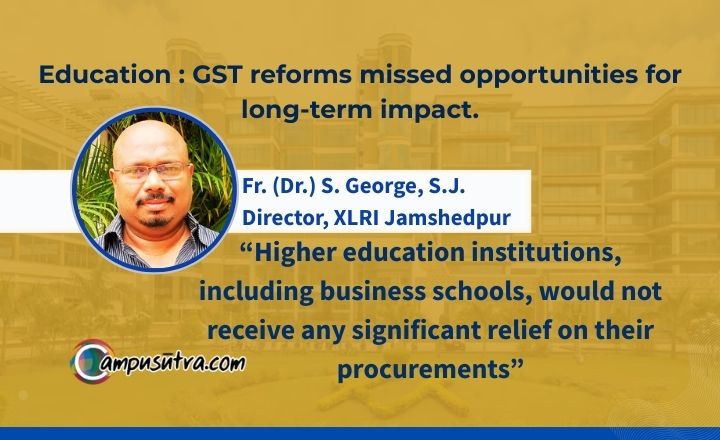The 56th GST Council Meeting, held today on the September 4th 2025, marked a decisive shift in India’s indirect tax landscape. With reforms aimed at simplification, sectoral relief, and export competitiveness, the Council signaled its intent to recalibrate GST for a more agile economy. From rationalizing rates across consumer goods and renewables to dismantling legacy clauses like anti-profiteering and intermediary taxation, the announcements reflect a maturing GST regime ready to embrace GST 2.0.
Apply to any top 250 B Schools from one window. Shortlist, save. CLICK
Yet, amid the applause for textile, auto, and healthcare sectors, one domain remained conspicuously under-addressed: education.
In an era where digital learning, skilling, and inclusive access are national priorities as per the National Education Policy (NEP), the sector’s muted representation in GST reforms raises questions about missed opportunities for long-term impact. GST continues to be levied on several areas, including applications for entrance examinations.
GST rationalization-A big boost for the economy
According to Dr S. George, S.J., Director, XLRI Jamshedpur, “Business schools offering diversified services such as corporate training, consulting, and e-learning stand to benefit from the overall GST reforms through streamlined compliance and faster refunds. Lower slab rates and procedural simplifications may ease operational costs and improve their cash flows, particularly for institutions with multiple revenue streams.
However, executive MBAs, MDPs, and online or blended programs continue to attract 18% GST, as they continue to remain classified as commercial services. Higher educational institutions must continue to factor this into pricing, especially for corporate or international offerings, where cost sensitivity remains high.
GST exemptions or rate cuts have been announced on several stationery items and supplies that primarily apply to schools up to the higher secondary level. Higher education institutions, including business schools, would not receive any significant relief on their procurements, which are mostly in the form of e-resources, data subscriptions as well as costly software, limiting the impact of these rate cuts on their overall operating costs.”
Students can download the entire list of GST changes by the GST council from here.







